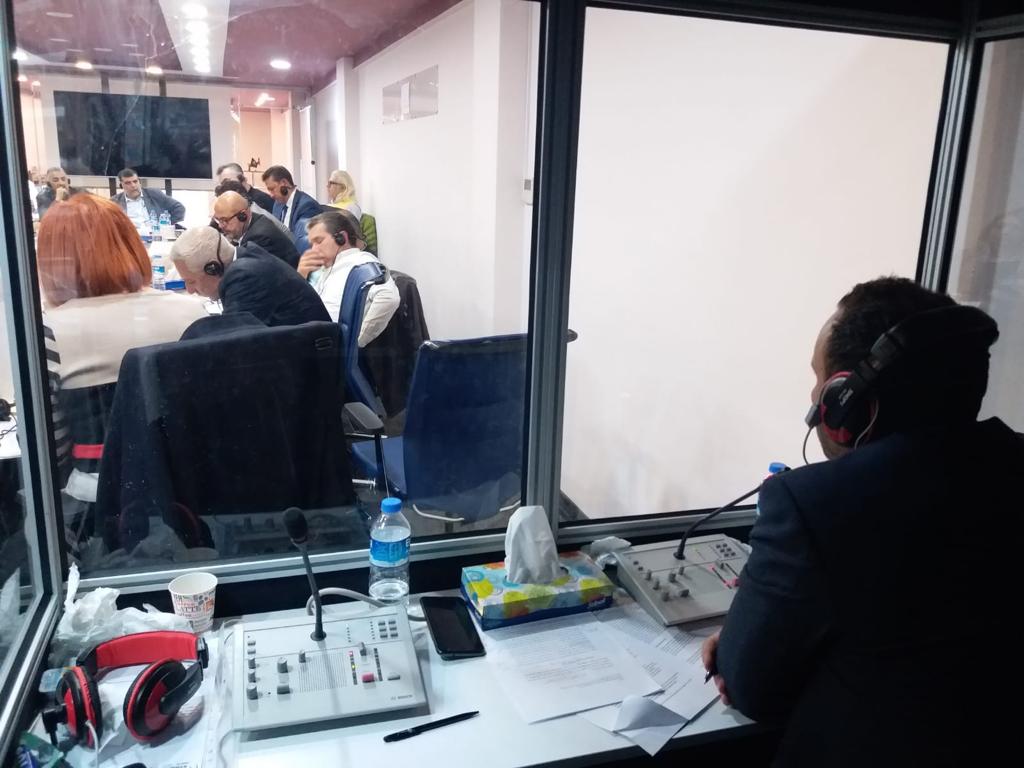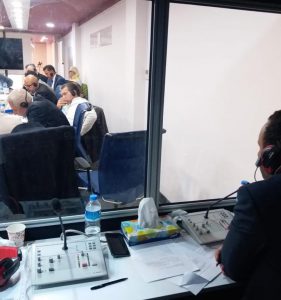Role of Interpreters in communications for Development for Development Activities
The role of the interpreters historically was crucial to bridge the communications gaps between monolinguals of different cultures. This role enhanced the intercultural relations among nations. The interpreters are still playing a decisive role in communications among nations, accordingly, the performance of globalisation might be diminished and might be reversely contextualised into localisation without interpreters.
ComDev in our context will be receded to focus only on economic growth within the borders of each nation without the interpreters, in addition to that, globalisation may lose its global political and cultural dimensions on the basis of no interpretation will lead to no communications between international organisations and locals, as a result, no development project will be implemented. I have worked for several years as a freelance interpreter in the development sector while I was working on development projects at non-governmental organizations, therefore, I have noticed many challenges between the donors on one hand, and the local stakeholders and beneficiaries, on the other hand, both parties were rarely reflecting directly to each other.
This blog is a perfect opportunity to share some of these challenges and to list some recommendations in this context. I think bringing a practical experience of the role of the interpreter in the development sector might play a pivotal role in building a clearer understanding of the devlopmentality that we advocate in this blog.
Challenges for interpreters and implementing organizations
The organizations that request simultaneous interpretation for their workshops usually place the interpreters’ booth at the end of the venue behind the participants. This might be challenging for the three parties, the trainers, the interpreters in the booth, and the audience. The audience in theoretical workshops can focus more if there is a direct contact with the trainer as it does not require an interaction between the audience and the interpreters, contrarily, the audience in the technical workshops needs to focus on the trainer and the interpreter simultaneously.
Moreover, when the interpreters interprets simultaneously, he/she usually delays by two seconds behind the trainer, therefore, the physical expressions of the trainer are also delayed for two seconds what the audience hears, and therefore the audience is forced to observe the translator and to communicate through the eyes and to watch the translator’s simulation of the trainer’s body language as happened in the video clip above when I was translating with SPARK organization and imitating the body language and the trainer’s signals to match the translation that I am doing because it is a technical translation that means when they should use the camera and from what angle and the implications of placing the pictures in a specific place of the newspaper so that the reader’s attention is drawn. On the podium in front of the audience and not behind them, and this is a positive point that many organisations working in the development sector do not notice.
Furthermore, An international organization held a workshop in 2015 in southern Turkey to empower Syrian women, the session was started with screening a documentary about women survivors from other conflicts, the film was in English without a subtitle, and the organizer counted on me to simultaneously interpret the quick conversations, therefore, I had also to interpret quickly. The audience on one hand might not able to understand everything, and on the other hand, they lost the opportunity to listen to the catchy music in the background of the video, and they were not able to fully feel the speakers as they were only listening to me as an interpreter, they were not able to listen to the speakers in the film who were crying or laughing. Nevertheless, it is important to interact with the visual methods, Bently, Nemer, Vannini argue: “For social researchers, visual methods can enrich their understanding of social contexts and problems, and they offer an inclusive manner to involve their participants fully (Bignante, 2010)” (2017, P477).
However, other international organizations are careful about it, Ayshen perfectly gives an example on the importance of having a subtitle to get a better understanding: “Unavoidably, the language barrier contributes to distance the audience from the chil- dren. This distance is overcome by subtitles that translate the children’s Arabic speech into multiple languages, such as English, Italian, and Turkish”, (Etem, Aysehan Jülide. 2020).
Finally, Covid19 Pandemic pushed the international organizations and the local stakeholders to have an adaptation with remote simultaneous interpretation, this adaptation has pros and cons, the pros are that this decreased the costs of holding physical meetings to a high level that might reach 80%, due to Savings in terms of cutting expenses of booking hotel halls, rooms, ground transportations, flights, and simultaneous interpretation equipment, this will be reflected positively on environment, as there is less expenditure in almost everything, less oil burning for not using cars and airplanes, less energy for not using hotel rooms and halls.
Recommendations:
- Organizations should share in advance the agenda and all training materials with the interpreters, so they can get familiar with any new terminology.
- Organisations should build a glossary for each topic they will work on; the glossary will be built after many meetings between the project staff and the interpreters.
- It would always be better to depend on the same interpreters when there are series of workshops that have the same topic as he/she becomes familiar with the content and the terminologies.
- It would be recommended to place the booth of the interpreters in an area that allow an eye contact with the audience and the trainer when there is an opportunity.
- It would be recommended to have subtitles when there is a video Screening, to get a better interaction and to avoid any interruption.
To conclude, communications for development has several aspects, engaging interpreters in the process of implementing projects in the age of globalization is one of them, such as preparing meetings with them in advance to build glossaries and to share the agenda and available materials especially development terminologies have not been localized hitherto in some languages and therefore remain incomprehensible It is a complementary process that will help to achieve more fruitful outcomes for all developmemental projects.
References:
- Etem, Aysehan Jülide. 2020. “Representations of Syrian Refugees in UNICEF’s Media Projects: New Vulnerabilities in Digital Humanitarian Communication.” Global Perspectives 1 (1). https://doi.org/10.1525/gp.2020.12787.
- Caitlin M. Bentley , David Nemer, Sara Vannini ‘‘When words become unclear’’: unmasking ICT through visual methodologies in participatory ICT4D

